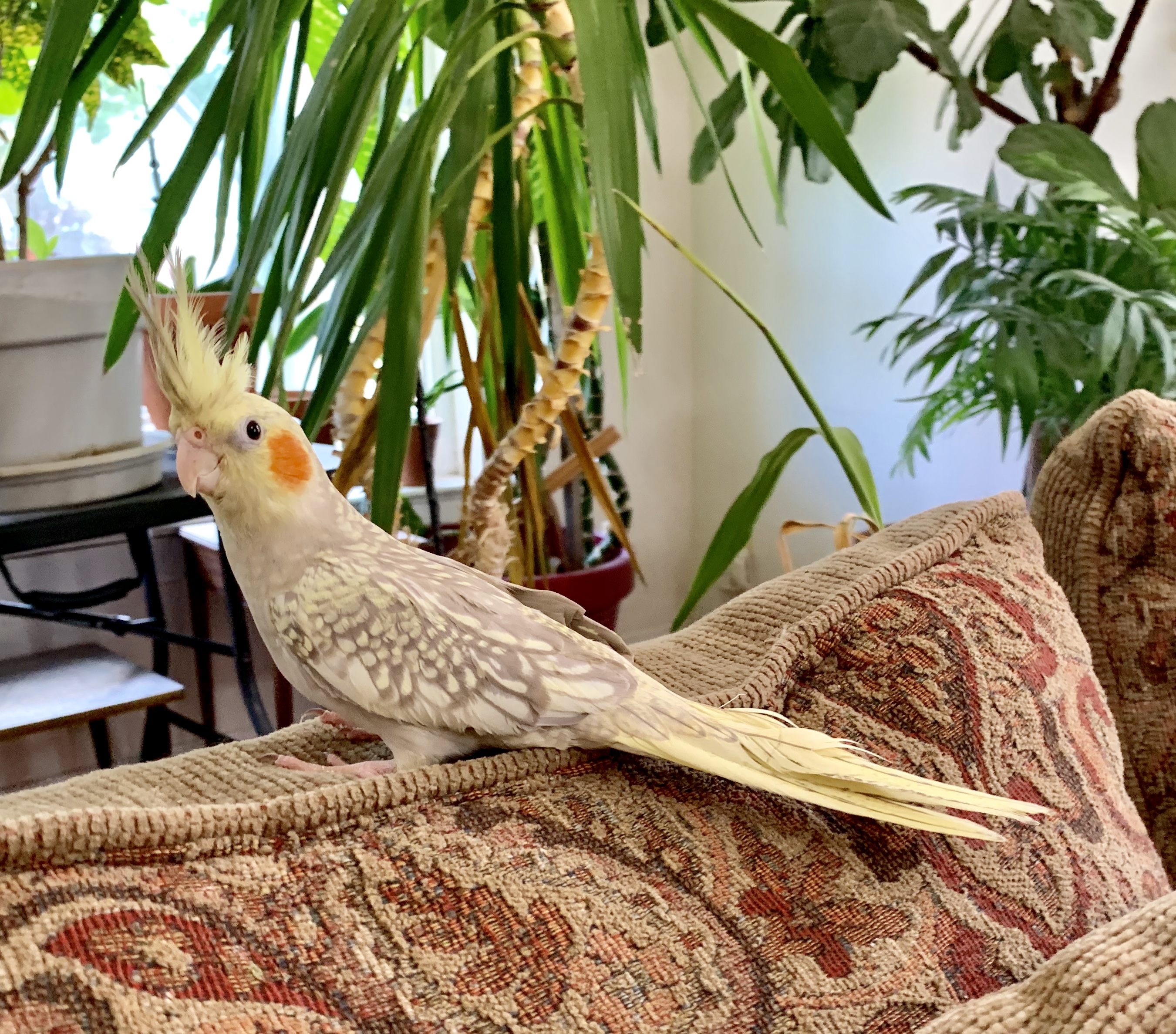Cockatiels Genetics
- Cary

- Aug 22, 2019
- 2 min read
There are three different types of genetic mutations in the Cockatiel. These are Sex-Linked, Recessive, and Dominant. The Sex-linked mutations are Pearl, Cinnamon, Lutino, and Yellow-faced. The Recessive mutations are Pied, Whiteface, Fallow, Recessive Silver and Yellow-cheeked. The Dominant mutations are Dominant Silver and Dominant Pastel-Face.
The Yellow-faced, Yellow-cheeked, Dominant Silver and Dominant Pastel-face are new mutations which are not addressed in this document. The breeding of these mutations should only be done by experts in cockatiel genetics until they have been well established. A bird may be "split" to a mutation but not visually display it. This means it carries the trait on its genes and can pass it on to it's offspring.
Sex-linked:
For a female to be produced the male parent must be at least split for the mutation. For a male to be produced the male parent must be at least split for the mutation and the female parent must visually show the mutation. Females cannot be split for sex-linked mutations, only the males. You have no way of knowing what mutations, if any, a male may be split to unless you know what mutations the birds parents were, or by test breeding.
Recessive:
For an offspring to be produced that shows a recessive mutation both of the parent birds must be at least split to the mutation. Both males and females may be split to a recessive mutation. You have no way of knowing what mutations, if any, the parents may be split to unless you know what mutations their parents were. There is one exception to this in that a bird that is split to pied will generally have yellow or white (in the case of whiteface) markings on the back of the head.
Pearl:
A male pearl will lose it's pearling and return to normal colorization after it's first molt. If you look carefully though, adult male pearls can usually be discerned by a mottled or dusty appearance on their backs, especially on the top of the wings. You will sometimes find a male pearl that does not lose the pearling, but this is very rare.
Lutino / Albino:
Lutinos have an inherent gene for baldness (the bald area behind the crest). it is therefore unwise to breed two lutinos together that each have a bald spot as the babies will inherit two genes for baldness and their bald spots will be worse than the parents. This includes breeding two albinos together as the albino mutation is actually a combination of the whiteface and lutino mutations.
Pied:
The only difference between a Heavy Pied and Light Pied is the amount of Yellow on the bird. A Light Pied is mostly Gray with some Yellow areas. A Heavy Pied is Mostly Yellow with some Gray Areas. There are also "Clear" Pieds in which the gray has been completely suppressed and the bird is completely yellow. A Clear Pied will look like a very yellow Lutino except it will have black eyes. In a Whiteface Pied, all Yellow areas are replaced with White.














Comments